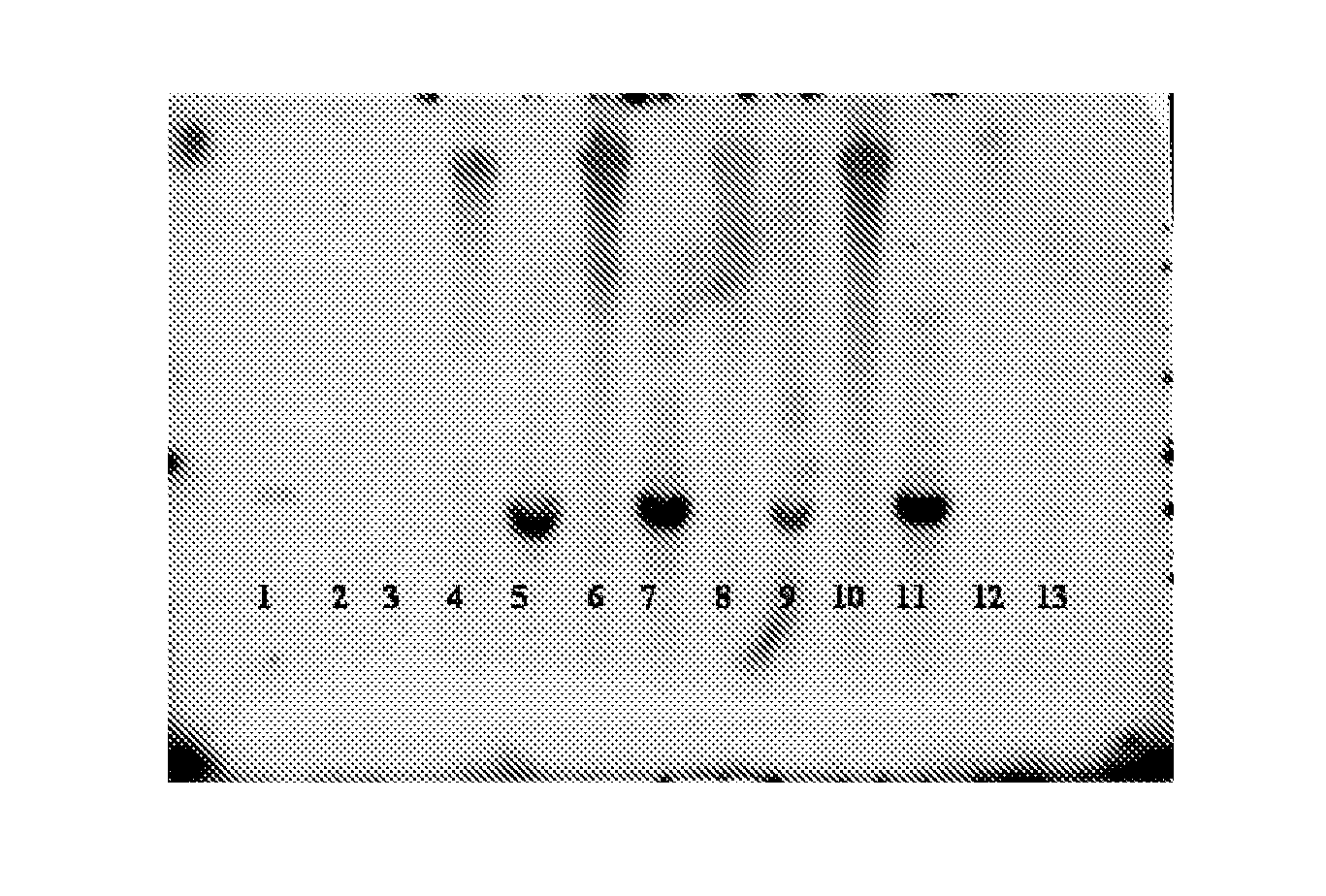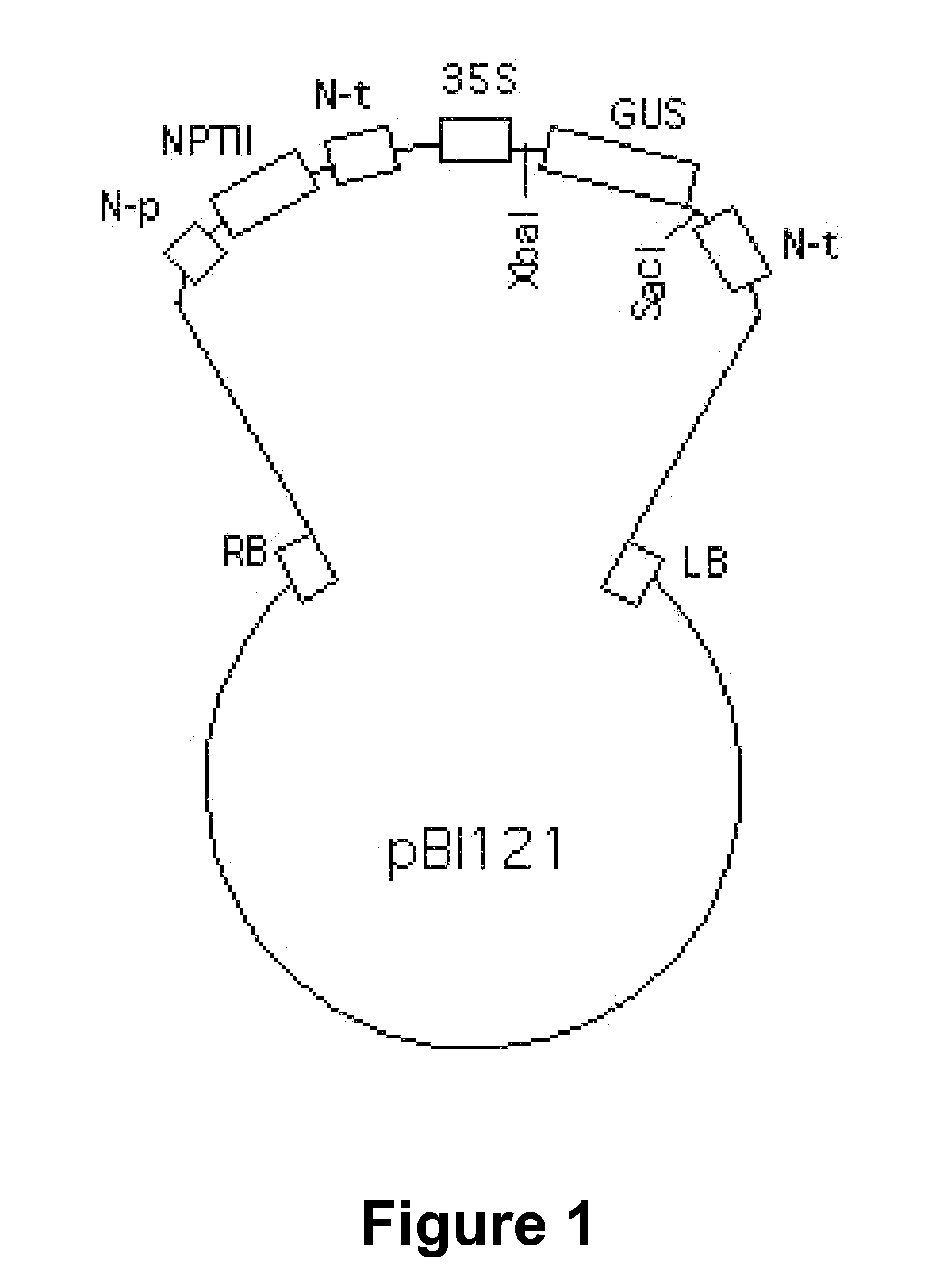Processing cellulosic biomass
a cellulosic biomass and cellulosic technology, applied in the field of processing cellulosic biomass, can solve the problems of toxic to plants high expression of active lignocellulolytic enzyme polypeptides, and achieve the effects of promoting cellulose hydrolysis, reducing processing, and shortening the tim
- Summary
- Abstract
- Description
- Claims
- Application Information
AI Technical Summary
Benefits of technology
Problems solved by technology
Method used
Image
Examples
example 1
Generation of Transgenic Tobacco
[0168]To generate the transgenic tobacco, wild-type tobacco was transformed with the E1 and then AtFLC genes using Agrobacterium tumefaciens as described below.
[0169]Description of the Donor. The endo-1,4-β-glucanase E1 gene (GenBank Accession No. U33212) was isolated from the thermophilic bacterium Acidothermus cellulolyticus. This bacterium was originally isolated from decaying wood in an acidic, thermal pool at Yellowstone National Park and deposited with the American Type Culture Collection (ATCC, Manassas, Va.) under collection number 43068 (A. Mohagheghi et al., Int. J. System. Baceril., 1986, 36: 435-443; Tucker et al., Biotechnology, 1989, 7: 817-820). As already mentioned herein, the bacterium has been characterized with the ability to hydrolyze and degrade plant cellulose.
[0170]For transformation into tobacco, the E1 catalytic domain was isolated from the genomic sequence and contained by 950-2020 listed in Accession No. U33212. To generate ...
example 2
Enzymatic Performance and Stability of E1 Tobacco
[0178]The stability properties of leaf protein concentrates and associated E1 cellulase activity in E1-FLC transgenic tobacco were characterized.
[0179]Leaf protein concentrates were prepared by macerating the tobacco leaves with ice in a blender at a ratio of 8:1 (w / 1). Samples of these extracts were analyzed for cellulase activity using carboxy-methyl cellulose. As shown in FIG. 16, extract from E1 plants but not wild-type tobacco can hydrolyze cellulase. Samples of these concentrates were also subjected to various conditions to determine the effect of refrigeration at 2° C., pre-heating the sample at 90° C., acidification to pH 4.0 with lactic acid, and drying the plant material prior to addition to external cellulase (Spezyme CP from Genencor International, Inc., Palo Alto, Calif.). Nine combinations of these variables were studied in the presence and absence of added cellulase (25 μL cellulase per mL).
[0180]The stability / activity ...
example 3
Transformation of Corn with E1-FLC
[0186]To develop a system for transforming corn, rice was used as cereal model plant system for transfer of the E1 and the bar genes. To do so, the pZM766E1-cat was inserted into pCAMBIA (purchased from pCAMBIA Co (Camberra, Australia) containing the bar selectable marker gene and the gus color indicator gene. The plasmid was obtained under a Material Transfer Agreement (MTA) from Dr. K. Danna of Colorado State University. The E1 transgenic rice plants showed the integration of all three transgenes (E1, bar and gus) by PCR. Furthermore, they showed E1 production as high as 24% total soluble proteins and enzymatic activity of the E1 transgene.
[0187]Several independent corn transgenic lines were then developed using biolistic bombardment. Lines showing confirmed integration, expression, enzymatic activity and accumulation of the transgene product inside of the apoplast were retained for further testing and development as described below.
[0188]Explant ...
PUM
| Property | Measurement | Unit |
|---|---|---|
| temperature | aaaaa | aaaaa |
| temperature | aaaaa | aaaaa |
| temperature | aaaaa | aaaaa |
Abstract
Description
Claims
Application Information
 Login to View More
Login to View More - R&D
- Intellectual Property
- Life Sciences
- Materials
- Tech Scout
- Unparalleled Data Quality
- Higher Quality Content
- 60% Fewer Hallucinations
Browse by: Latest US Patents, China's latest patents, Technical Efficacy Thesaurus, Application Domain, Technology Topic, Popular Technical Reports.
© 2025 PatSnap. All rights reserved.Legal|Privacy policy|Modern Slavery Act Transparency Statement|Sitemap|About US| Contact US: help@patsnap.com



